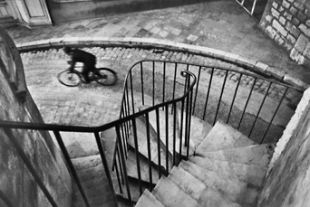
Magnum Contact Sheets
This is the best photography book of 2011 by a long-shot—not because the others were poor but because this one is just so good, so comprehensive, so big, so full of iconic photos and contact sheets. Part of the skill in being a real photographer comes from possessing the ability to effectively edit photos, and I’ve yet to see a better, more beautiful expression of the editing process than the one you’ll find here.

From Me to You
From Me to You is a photo blog my Jamie Beck, and it is wonderful. She often shoots with the classic Leica and Kodak Tri-X. Because that was the combo that first got me excited about street and candid photography, I had to check out her blog. Jamie’s photos are lovely and warm and evocative. I especially enjoyed her retrospective from New York Fashion Week last year, which she shot entirely with Tri-X.
I also identify with Beck’s response in this interview to the question, “What emotions do you try to create or convey?” She said:
“I love creating the feeling of nostalgia. Maybe it’s because I wish to live in the past so I project my own desires into my work but there is something to the notion of days gone by that I love creatively living in — I guess it’s safe there. I don’t set out thinking nostalgically in my head but I am drawn to classic or timeless subjects.”

Yashica Electro 35mm Rangefinder Camera
A couple friends of mine were on the lookout for a cheap, good rangefinder and settled upon the Yashica Electro 35. It’s available in a few different versions, the GT, GTN, GS, and GSN. For practical purposes, these four are all the same. They all come with an excellent 45mm f/1.7 lens and a nice, large 0.85x rangefinder.
Yes, the camera has some downsides. Its only shooting mode is aperture priority. In other words, you cannot manually set its shutter speed (limited to 1/500s at the high end). The battery that it was designed for is no longer made, but it’s possible to buy an adapter to use most six volt batteries. As a result, most copies of the Electro that are available for sale have not been tested and ones that have will command a premium. Untested cameras can be had on eBay for as little as $20, while ones whose meters and shutters have been confirmed to work can go for $100 or more. Given the Electro’s excellent f/1.7 lens, large viewfinder, accurate meter, and extremely quiet shutter, either price is a steal.
Buy the Yashica Electro on Etsy
Sample photos from the Yashica Electro on Flickr
Yashica-related resources at Yashicaddiction.com
Everybody Street by Cheryl Dunn
The New Yorker ran some excerpts from Cheryl Dunn’s documentary on street photography last month, but now you can watch the entire thing on the film’s website. My favorite sections are those with Ricky Powell, who explains how getting dumped by a girl made him a photographer, and Joel Meyerowitz, who describes how the streets suddenly became alive to him when he began street photography.

Waiting for the Future by Jens Olof Lasthein
This series of photos by Jens Olof Lasthein won Leica’s Oskar Barnack Prize in 2010. I absolutely love the first image in the series. The story it tells and the tones and colors in which it tells that story are magnificent.

Once by Wim Wenders
I adore this book of photographs and text by Wim Wenders, much of which he shot while doing research for his films, which include Wings of Desire, Paris, Texas, and Buena Vista Social Club. Its title comes from the idea that photos don’t create ongoing moments, to steal the title of Geoff Dyer’s book; more than anything, they tell you that this happened once and will never happen again. Wenders concludes his volume:
“Once is not enough,”
I used to say as a kid.
That seemed very plausible to me,
“once upon a time.”
But when you take pictures,
I learned,
none of that applies.
Then once is
“once and for all.”

Henri Cartier-Bresson: The Modern Century
This exhibit, curated by Peter Galassi at MoMA in New York and currently in San Francisco, is an excellent retrospective of Cartier-Bresson’s work—the earliest of which makes possible so much of what has photographically come after. In a time when photojournalism needs to defended against skepticism, this exhibit is, perhaps, the best argument we have for its importance and relevance. You cannot come away from it as anything but a believer in photography.

Andy Spyra Photography
There’s a tough, gritty quality to Andy’s photojournalism that is palpable and classic. Much of his work, including this photo essay in the Independent, comes from Bosnia.

Annie Leibovitz: Life Through a Lens
At one point in this documentary, made by Annie Leibovitz’s sister, Leibovitz recalls a cover shoot for Rolling Stone that she did with a group of musicians that included Bruce Springsteen and Jackson Browne. She lined them up against a white wall and took photos. When Leibovitz’s mentor, Bea Feitler, saw the photos she berated her, telling the photographer that she could have done so much more with that group of people. How often is that the case—that we could have made so much more out of what we had? One other thing I noticed in this film is that Leibovitz uses her Leica M6 for almost all of her personal and family photos. I recall having seen a retrospective of her work a few years ago at the Legion of Honor in San Francisco. In it, there was a photograph of Susan Sontag in Seattle, on her way back to New York to die. It’s reproduced here in this documentary, and it’s still one of the saddest photographs I’ve ever seen.
Watch the trailer here.